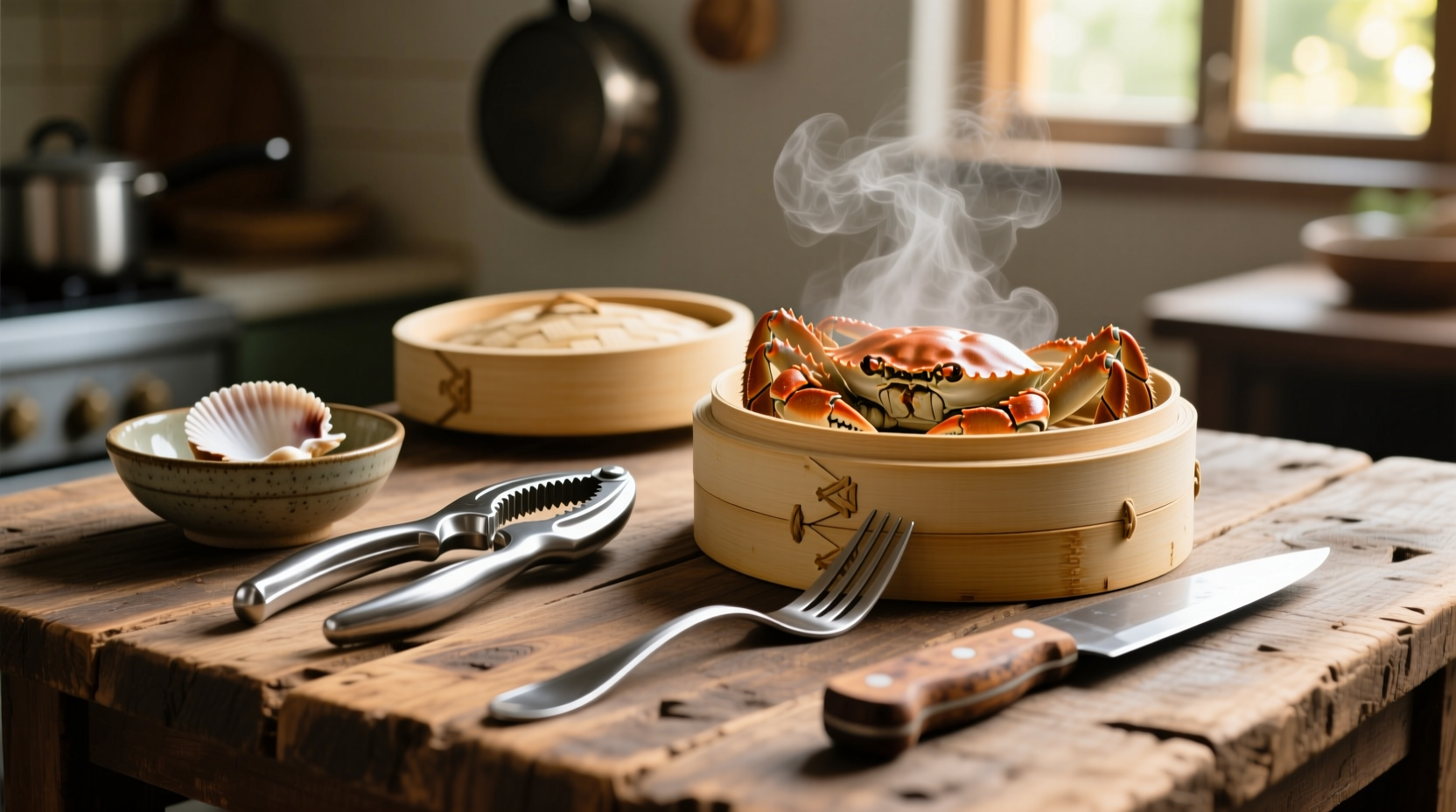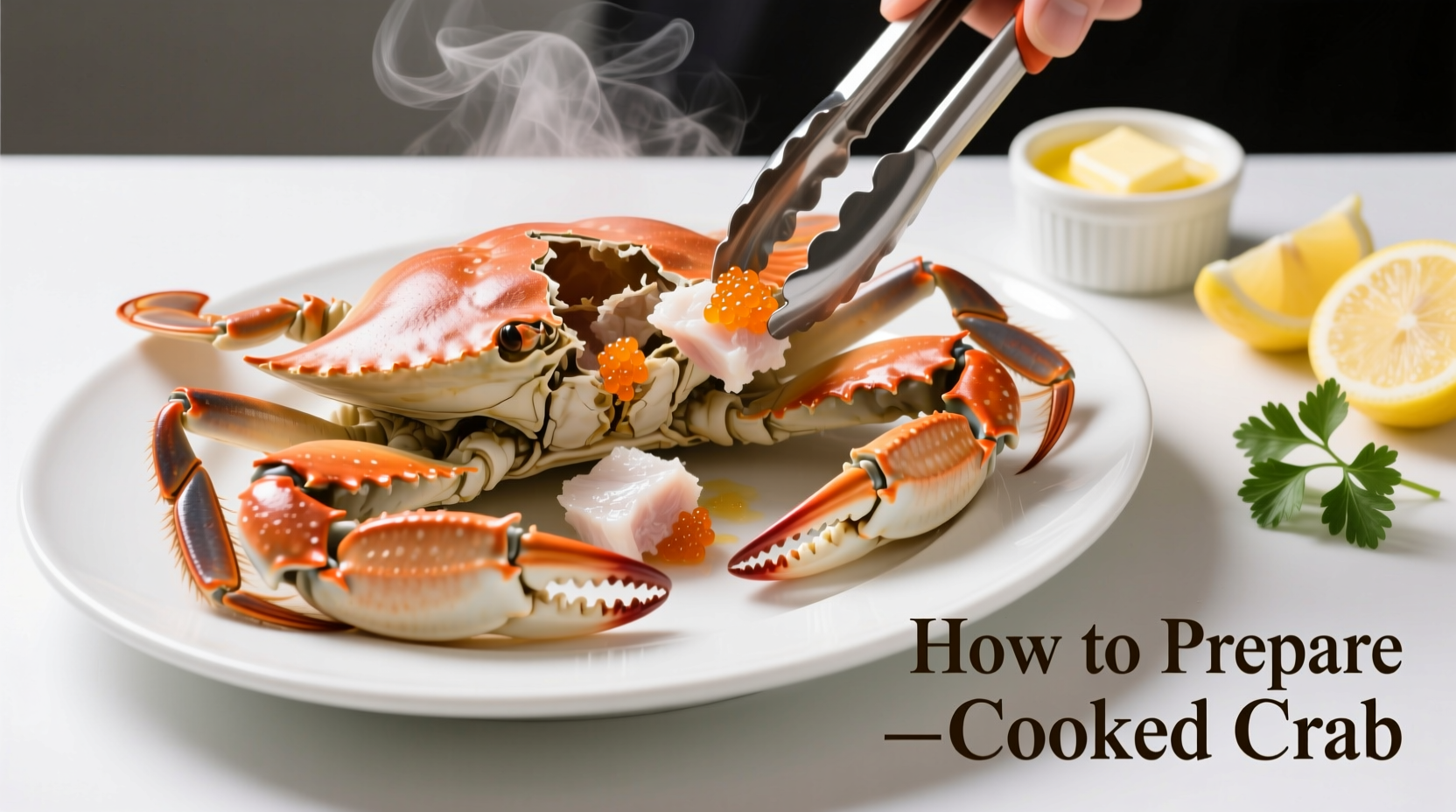Essential Tools for Perfect Crab Preparation
Before handling your cooked crab, gather these essential tools to make the process efficient and enjoyable. A dedicated crab cracker applies even pressure without crushing the delicate meat. Small mallets work well for larger claws, while specialized seafood forks help extract meat from hard-to-reach areas. Keep nut picks handy for leg meat extraction, and prepare serving platters with bowls for discarded shells. Professional chefs recommend having multiple small bowls available—one for melted butter, one for lemon wedges, and another for discarded shells.

Proper Cooling Techniques After Cooking
Immediately cooling cooked crab preserves texture and prevents overcooking. Submerge the crab in an ice bath (equal parts ice and cold water) for 15-20 minutes until completely cooled. The FDA recommends keeping seafood at 40°F or below to prevent bacterial growth. For larger crabs like Dungeness or king crab, extend cooling time to 25 minutes. Never leave cooked crab at room temperature for more than two hours, or one hour if ambient temperature exceeds 90°F.
| Crab Type | Cooling Time | Preparation Time | Refrigeration Storage |
|---|---|---|---|
| Dungeness | 15-20 minutes | 10-15 minutes | 3-4 days |
| Blue Crab | 10-15 minutes | 8-12 minutes | 2-3 days |
| King Crab | 20-25 minutes | 15-20 minutes | 3-4 days |
| Snow Crab | 12-18 minutes | 10-15 minutes | 3 days |
Step-by-Step Cleaning Process
Start by removing the apron—the triangular flap on the underside. Flip the crab over and lift the top shell (carapace) away from the body. Discard the spongy gills (dead man's fingers) and the internal organs, keeping only the yellow mustard if desired. Rinse the body sections under cold water to remove any remaining debris. For blue crabs, remove the lungs and mandibles. When preparing Dungeness crab, pay special attention to cleaning the body sections where meat accumulates. Proper cleaning ensures no unwanted parts interfere with your dining experience.
Effective Cracking Techniques for Maximum Meat Yield
For legs, bend each section at the joints until they snap, then use a crab cracker on the thicker segments. When handling king crab legs, start from the knuckle end and work toward the claw. For claws, strike firmly with a mallet on the thickest part of the claw, avoiding excessive force that might crush the meat. Professional seafood chefs recommend twisting the claw at the joint before cracking to separate the sections cleanly. Extract meat from larger claws using a nut pick, working from the narrow end toward the wider portion. Snow crab legs require gentler pressure due to their thinner shells.
Optimal Serving Methods and Accompaniments
Serve prepared crab on a bed of crushed ice to maintain ideal temperature. Classic accompaniments include melted butter with lemon wedges and drawn butter sauce. For added flavor, try clarified butter with garlic and herbs. Arrange the cracked pieces attractively on the platter, keeping claws and legs separate for easier access. Many seafood restaurants recommend serving crab with melted butter at precisely 120°F—hot enough to enhance flavor but not so hot that it cooks the delicate meat. Consider adding Old Bay seasoning or lemon pepper for extra dimension without overpowering the natural sweetness of the crab.
Storage Guidelines for Leftover Cooked Crab
Store leftover crab meat in an airtight container with a damp paper towel to maintain moisture. Refrigerate immediately and consume within 3-4 days for optimal quality. For longer storage, freeze crab meat in freezer bags with as much air removed as possible. The National Fisheries Institute recommends using frozen crab within two months for best texture. Never refreeze previously frozen crab meat. When reheating, use gentle methods like steaming for 2-3 minutes rather than microwaving, which can make the meat rubbery.
Avoiding Common Preparation Mistakes
Many home cooks make the critical error of skipping the proper cooling step, resulting in overcooked, rubbery meat. Others use excessive force when cracking shells, destroying the delicate meat inside. Avoid rinsing crab under hot water, which can wash away flavor and alter texture. Don't leave prepared crab at room temperature for extended periods—seafood spoils quickly. When serving, provide enough tools for each guest; sharing tools creates bottlenecks during the meal. Finally, resist the temptation to over-season, which masks the natural sweetness of high-quality crab.
Species-Specific Preparation Considerations
Different crab varieties require slightly different approaches. Blue crabs need more thorough cleaning of the body sections. Dungeness crabs have thicker shells requiring more precise cracking techniques. King crab legs are often sold pre-cracked, needing only reheating and minimal preparation. Snow crab clusters require gentler handling due to their more delicate structure. Alaskan king crab benefits from a brief soak in salted water before serving to enhance flavor. Understanding these subtle differences ensures optimal preparation regardless of crab type.
Food Safety Best Practices
Maintain proper food safety throughout the preparation process. Keep cooked crab refrigerated until ready to prepare. Work on a clean surface and wash hands thoroughly before and after handling seafood. Use separate tools for crab preparation to prevent cross-contamination. The FDA Food Code specifies that cooked seafood should not remain in the temperature danger zone (40°F-140°F) for more than two hours. When in doubt about freshness, trust your senses—fresh cooked crab should have a clean ocean scent, not a strong fishy odor. Discard any crab that appears slimy or has an off-color.











 浙公网安备
33010002000092号
浙公网安备
33010002000092号 浙B2-20120091-4
浙B2-20120091-4